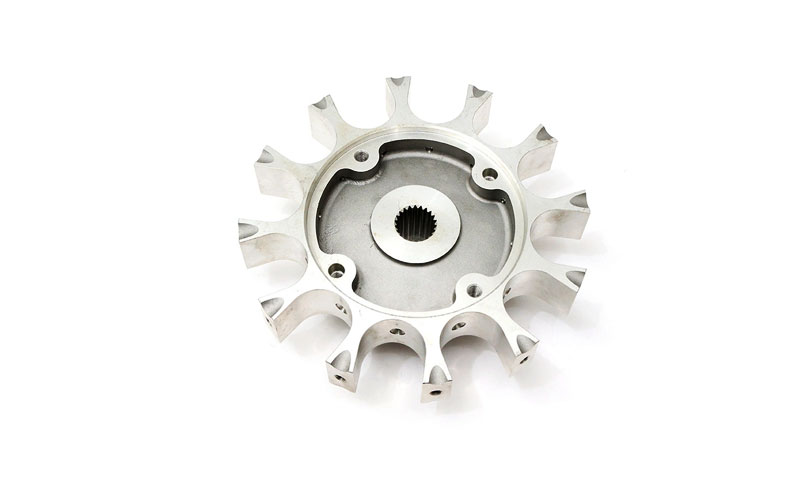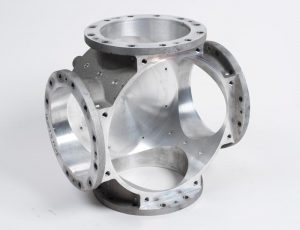Understanding Quality Control in Aluminum Foundry
Wiki Article
Comprehending Aluminum Casting: A Comprehensive Guide to Its Advantages and Applications
Aluminum casting is a process that transforms molten aluminum right into strong types via numerous techniques. This technique provides significant advantages, such as light-weight strength and corrosion resistance. It locates applications in numerous sectors, reflecting its flexibility. However, comprehending the details of aluminum casting and its ideal methods can considerably affect the top quality of the end product. Exploring these aspects discloses truth potential of aluminum casting in modern manufacturing.The Fundamentals of Aluminum Casting
Aluminum casting is a manufacturing procedure that changes molten aluminum into solid things through different strategies. This procedure begins with heating aluminum until it reaches its melting point, enabling it to stream right into molds. There are several techniques of aluminum casting, consisting of sand casting, pass away casting, and financial investment casting, each ideal for different applications based upon design complexity and production quantity.In sand casting, molds are created making use of sand, offering adaptability for elaborate forms. Die casting includes compeling molten aluminum right into a steel mold under high stress, causing specific and repeatable parts. Financial investment casting, on the other hand, makes use of a wax pattern that is coated with ceramic to create comprehensive parts.
After the aluminum cools and strengthens, the molds are removed, exposing the ended up items. This casting process is indispensable in various sectors, including auto, aerospace, and consumer goods, making it possible for the development of long lasting and lightweight components.
Advantages of Aluminum Casting
Among the crucial benefits of aluminum casting exists in its ability to generate light-weight yet solid components. This special mix makes aluminum an ideal selection for numerous industries, including vehicle, aerospace, and customer products. The intrinsic deterioration resistance of aluminum additionally enhances the longevity of the cast components, prolonging their life expectancy and decreasing the need for upkeep.
In addition, aluminum casting permits complex layouts and intricate geometries, which can cause a lot more efficient and cosmetically pleasing products. The product's exceptional thermal and electric conductivity better expands its applications, particularly in electronics and heat exchangers.
In addition, aluminum recycling is extremely reliable, adding to ecological sustainability and minimizing production expenses. Overall, the benefits of aluminum casting position it as a flexible and functional solution for makers seeking to optimize performance while decreasing weight and resource use.
Usual Methods of Aluminum Casting
While numerous techniques exist for aluminum casting, each method supplies distinct advantages tailored to particular applications. The most typical approaches consist of sand casting, die casting, and financial investment casting.Sand casting, understood for its flexibility, utilizes sand molds to produce complicated shapes and is suitable for both small and large production runs. Pass away casting, on the other hand, utilizes high-pressure shot of molten aluminum right into steel molds, resulting in precise measurements and smooth surface areas, making it ideal for automation.
Investment casting, often described as lost-wax casting, includes creating a wax pattern coated with a ceramic covering. aluminum casting. As soon as the wax is dissolved, molten aluminum is poured into the cavity, producing complex designs and exceptional surface area finishes
Each of these methods plays a vital role in the aluminum casting landscape, providing certain advantages that accommodate differing manufacturing demands and production scales.
Applications Across Industries
The flexibility of aluminum casting methods enables a vast array of applications throughout different sectors. In the auto industry, lightweight aluminum parts boost fuel performance and performance, adding to the growing need for electrical vehicles. Aerospace markets utilize aluminum spreadings for their strength-to-weight proportion, making sure safety and resilience in airplane manufacturing.The building and construction sector gain from aluminum casting with building components and architectural parts that resist corrosion and call for minimal maintenance. In addition, consumer electronic devices suppliers utilize aluminum spreadings for real estates and frameworks, balancing aesthetic appeals with performance.
In the marine industry, aluminum castings are preferred for boats and aquatic tools due to their resistance to deep sea deterioration. Additionally, the medical area utilizes aluminum spreadings in surgical instruments and devices, making sure accuracy and reliability. In general, aluminum casting's versatility allows it to fulfill the diverse requirements of numerous sectors, making it an essential manufacturing process.
Ideal Practices for Effective Aluminum Casting
Successful aluminum casting counts on a mix of careful prep work, precise implementation, and thorough quality assurance. Originally, selecting top notch aluminum alloys is important, as they directly affect the casting's properties and efficiency. Correct mold style is essential, guaranteeing that it fits thermal tightening and minimizes problems.During the melting procedure, keeping the appropriate temperature and preventing contamination are crucial to attaining an uniform alloy. In addition, utilizing efficient pouring techniques can enhance the dental filling of molds, minimizing the likelihood of air pockets or incorporations.
Post-casting, applying extensive inspection techniques, such as aesthetic evaluations and non-destructive testing, guarantees that defects are recognized early. Employing rigorous top quality control actions throughout the process helps keep consistency and dependability in the last products. By adhering to these ideal practices, manufacturers can substantially boost the success and performance of their aluminum casting procedures.
Often Asked Questions
What Safety Procedures Should Be Taken Throughout Aluminum Casting?

How Can Issues in Aluminum Castings Be Lessened?
Issues in aluminum spreadings can be reduced with mindful mold design, appropriate temperature level control, making certain clean steel, utilizing ideal pouring techniques, and conducting detailed aluminum casting inspections to determine and address issues before wrapping up the casting procedure.
What Is the Ecological Impact of Aluminum Casting?
The ecological effect of aluminum casting includes energy-intensive procedures, greenhouse gas discharges, and resource removal worries. Nevertheless, advancements in reusing and sustainable techniques can alleviate these impacts, advertising an extra green method to aluminum production.Can Aluminum Casting Be Recycled?
Yes, aluminum casting can be recycled effectively. The reusing process calls for considerably much less energy compared to key aluminum production, making it an eco-friendly choice that contributes to resource preservation and decreased carbon discharges.What Are the Prices Related To Aluminum Casting Processes?
Prices associated with aluminum casting processes consist of material costs, labor, tools maintenance, energy intake, and mold construction. These variables can vary significantly based upon manufacturing scale, complexity of styles, and details manufacturing techniques utilized.Aluminum casting is a procedure that changes liquified aluminum into solid types via various techniques. Aluminum casting is a manufacturing procedure that changes liquified aluminum into solid items with numerous techniques. While various methods exist for aluminum casting, each technique uses distinct advantages tailored to particular applications. The ecological impact of aluminum casting includes energy-intensive processes, greenhouse gas discharges, and source removal worries. Prices linked with aluminum casting processes include material costs, labor, devices upkeep, power intake, and mold fabrication.
Report this wiki page